
МУНИЦИПАЛЬНОЕ ОБЩЕОБРАЗОВАТЕЛЬНОЕ УЧРЕЖДЕНИЕ
«СРЕДНЯЯ ОБЩЕОБРАЗОВАТЕЛЬНАЯ ШКОЛА № 1»
С. НОВОСЕЛИЦКОГО НОВОСЕЛИЦКОГО ОКРУГА СТАВРОПОЛЬСКОГО КРАЯ
XVI НАУЧНО-ПРАКТИЧЕСКАЯ КОНФЕРЕНЦИЯ ШКОЛЬНИКОВ
«НОВОЕ ПОКОЛЕНИЕ»
Секция «Лингвистика»
Научно-исследовательский проект
«FASHION OF ENGLAND AND RUSSIA IN THE 18TH CENTURY»
Выполнила:
Обучающийся 7 Б класса
Заярская Анжелика
Научный руководитель:
Торопова Нина Герасимовна
с. Новоселицкое, 2023
Content
Introduction – 2 - 4
Chapter 1. The history of fashion in the 18th century
1.1. Fashion in the 18th century - 5 - 6
1.2. English fashion in the 18th century – 6 - 7
1.3. Russian fashion in the 18th century – 8 – 9
1.5. Shoes in the 18th century – 13 - 14
1.6. Children’s fashion in the 18th century - 15
1.7. Peasant’s clothes – 16 – 17
Chapter 2. A comparative analysis of the fashion of England and Russia in the 18th century - 18 – 19
Conclusion - 20
References - 21
Appendixes - 22 - 35
Introduction
Research work is devoted to the comparative analysis of fashion in England and Russia in the 18th century. The relevance of the topic is devoted to the fact that since we are learning English and Russian, and therefore we delve into the culture of the countries, but many of my classmates do not know the differences and the meaning of the costume. We are sure that through the clothes we can understand political influence and social features of the 18th century in England and Russia.
The work consists of an introduction, two chapters, a conclusion, a list of used literature and appendixes. The introduction defines relevance, object, purpose, tasks, methods, hypotheses of research. The first chapter, containing the theoretical foundations of the study, discusses the basic concepts of fashion of the 18th century, the features of fashion of England and Russia. The result of the experimental study is presented in the second chapter. The first paragraph describes an experimental study consisting of two phases. In conclusion, the results of the study are summarized.
Fashion is one of the most unmistakable indicator of the hallmarks of society. This is a part of the person, country, people, and professions. In different countries, the development of society had its own specific characteristics, and all of them are pronounced in the variety of costumes. Each era creates its own aesthetic ideal of a person, its own beauty standards. In all periods of the existence of the estate society, the costume was a means of expressing social affiliation, a sign of the privileges of one estate over another. The more complex the structure of society, the richer the tradition, the more diverse the dress. Since the fashion phenomenon is unstable, often changing, it can be argued that it adapts to the tastes and preferences of the society.
I have been interested in the 18th century the era of fashion for a long time. Therefore, I would like to systematize all the information received, get a deep understanding of the men and women’s clothes, analyze and compare the collected information. The first thing that comes to people's minds is that in the UK girls walk like duchesses, and men are always in suits. Most believe that in Russia girls are dressed in headscarves, in fur coats and with painted rosy faces, and men wear leather suits and earflaps. This is how these countries have always been positioned, but today I would like to refute the stereotypes, as well as to compare the fashion of these countries to make sure that fashion is not always the same.
Relevance of the Topic: The relevance of the topic is devoted to the fact that since we are learning English and Russian, and therefore we delve into the culture of the countries, but many of my classmates do not know the differences and the meaning of the costume. We are sure that through the clothes we can understand political influence and social features of the 18th century of England and Russia.
The Aim of the Research: in the framework of our research, the main objective to achieve is to study the development of men’s, women’s and children’s costumes in the period of the 18th century in England and Russia.
In accordance with the purpose of the study, we assigned some tasks:
1. Identify the main features of 18th century fashion;
2. Conduct a comparative analysis of the fashion of England and Russia;
3. Systematize the information received on the fashion in England and Russia in the 18th century.
Object of the research work: the fashion of England and Russia in the 18th century.
Subject of research: the differences of fashion in Russia and England in the 18th century.
The problem of the differences of fashion in Russia and England in the 18th century has not lost its topical significance, therefore, this problem requires a detailed study.
Hypothesis: If we study the fashion of the 18th century in England and Russia, then we will see that English clothes is elegant and Russian clothes is comfortable.
Methods of Investigation of our research work are: problem search, theoretical, practical.
The practical significance of our work lies in the fact that teachers and students can use the information obtained in the research during the study fashion topics in the classroom.
Chapter 1. The history of fashion in the 18th century
1.1. Fashion of the 18th century
Peter the Great’s westernization efforts of Russia was far reaching to the extent that he ordered his boyars and state officials to wear Western dress. Members of the tsar family were the first to change their dresses to the European style, which was very oriented towards French fashion. From this point European fashion began to influence the country.
The beginning of the new century was marked by the arrival of the magnificent Rococo style. All fashion trends, as before, were dictated from France and England.
Fashion of the early 18th century brought to the fore a female silhouette with a narrow "corset" waist, with a lace neckline and a huge skirt at the waist. This is a special device for giving the skirt the necessary dome-like shape. In the beginning, these were round paniers, and in the second half of the 18th century, paniers with barrels became fashionable. There were dresses with strongly protruding sides, but flat in front and on the backside. French fashion of the 18th century also offered a swing dress-grodetour, which was worn on top of an underdress made of lighter fabrics without any cutouts or decolletage. Dresses were covered with a lot of bows, ribbons, frills. Thus, the fashion of the 18th century in Europe was different, but still the bombast gradually faded into the past. France was slower in this regard, and England quickly realized that after all, feminine, tailored outfits look much better than even the trendiest styles that do not suit a lady.
The clothing of that era was different from the modern one, but the basis of the men's three-piece suit was formed even then. Today it is a jacket, vest and trousers, and in the XVIII century – a caftan, a doublet and culottes .The caftan, as a rule, was sewn so that it tightly fitted the torso to the waist, but the floors-knee-length were wide. The cuffs on the long sleeves were also spacious. The caftan was dispensed with without a collar, the upper garment was only partially buttoned, or the Culottes — as they were called in France — were not buttoned at all, short trousers, people of rank and wealth. Men's casual suits were made of wool and cloth, while dress suits were made of velvet, silk, and satin. Under the doublet, men, like women, wore a shirt. . European aristocrats paid great attention not only to clothing, but also to shoes and accessories. Shoes with high heels by modern standards were decorated with buckles. Boots were also worn, but less often: they were shoes for traveling, traveling, and hunting. On the head, a wig was put on, liberally sprinkled with powder. Its most popular type is an artificial hairstyle with tightly curled curls on the sides and a tail tied with a black bow.
1.2. English fashion of the 18th century
At the end of the XVIII century in bourgeois industrial England, the English national style in costume, which originated in the XVII century, finally won. Rococo, like the Baroque, had almost no influence on the English costume, which developed in the traditions of classicism. This was manifested in the desire for simplicity, practicality, convenience, naturalness of lines and shapes .The practical British preferred broadcloth and wool over silk and lace. The English influence in French costume, as well as the French influence in English, is mutual throughout the period. However, the features of English fashion, strict and expedient, more in line with the spirit of the time, although they acquired a greater coquettishness and pretentiousness in the French costume, enriched and guided the main line of development of the costume. The French influence in English costume, however, becoming dominant for a certain period, eventually gave way before the refined simplicity and restraint of national taste.
Women costume of the 18th century was based on a corset and a fizhma (skirt with a frame in the form of a hoop). Over this outfit, the English women wore an Anglaise dress, which consisted of a tight bodice and a straight skirt, and the neckline was covered with a scarf. In the home environment, English ladies completely refused to wear a skirt with a frame – instead of a figma, they used an ordinary simple dress with a quilted skirt, which was called a negligee. In the 50s, oval-shaped fizhmas appeared, which were attached on hinges, which allowed you to adjust the volume of the skirt by squeezing the elbows, but at the end of the 18th century, the fizhmas disappeared, and in women's attire, only the corset remains framed. English fashion is increasingly trying to get closer to convenience and simplicity, as a result of which a strict, business suit appears in the women's wardrobe – a combination of a jacket and a skirt that resembles a man's tailcoat and which provides sufficient freedom of action. Color scheme-gray, brown, olive, purple. In summer clothing — light light silk and cotton fabrics, smooth or with a small floral pattern.
In the men's suit, velvet, silk, and satin were replaced with wool and cloth .The English broadcloth coat had a double-breasted clasp, a high standing collar, a more modest neckerchief, and a tie. The tailcoat was shorter than the French and had a straight, rounded bottom line of the side in contrast to the French, in which the floors were sharply sloped at the bottom. In addition, the cut and silhouette of the English tailcoat provided greater freedom of movement, did not create super-narrow volumes. On the basis of the English tailcoat, the redingot appeared first as a rider's clothing, and then as an upper garment of an adjacent silhouette, with a double-breasted clasp and a collar with a high stand or with several collars. The practicality, efficiency and convenience of the English forms, corresponding to the new way of life of the bourgeois, provided England with the position of the legislator of men's European fashions from the end of the XVIII century to the present day. The shirts had narrowed cuffs and shrunk frills. The culottes also remained narrow. Along with the white ones, striped wool stockings appeared.
1.3. Russian fashion of the 18th century
The traditional Russian costume was an important part of the culture and Western fashion trends couldn’t reach the country. That was until the 18th Century when Peter the Great carried reformed the look of upper and middle classes and forbid people in St. Petersburg wearing it because he thought the costume was only for peasants. In Russia, until the 18th century, all layers of society still wore traditional Russian costume, and all foreign, "German" fashions were rejected. The Russian costume and hairstyle of the XVIII century were greatly influenced by the Polish and French dress. The replacement of the Russian costume with a fashionable pan-European one occurred at the beginning of the XVIII century after a number of special decrees of Peter the Great. This contrasting change in clothing affected only the rich strata of society. The transformation of Peter I coincided with the dominance of French fashion in Europe. However, the influence of Dutch and German costumes was more characteristic of the Peter the Great era. It primarily affected the greater simplicity of fabrics and finishes, and the orientation to the tastes of the burghers.
Court members were from now on obliged to wear European clothing and the Long tradition of the sarafan began to crumble. From this point on European fashion began to influence the country.
Members of the tsar family were the first to change their dresses to the European style, which was very oriented towards French fashion. During this time the corset as well as the headdress, the so called fontange were brought to Russia from Europe. The fontange replaced the traditional headdress which was worn by married women to cover their hair fully. European clothing showed that someone belonged to the powerful classes while the other classes stuck with the traditional dress. The clothes worn by the common folk transformed very slowly while the change of clothing in the cities St. Petersburg and Moscow changed rapidly.
The clothing of peasant women in the 18th century changed slowly, preserving the traditional forms inherited from distant ancestors. The main dress was a shirt or shirt. Its upper part (bodice) was called "hugging". It was sewn, as well as the sleeves, from a thin material, in contrast to the lower part – underwear, which was cut from canvas. At the collar and on the sleeves at the wrist, ribbons were pulled – "vzderzhki", with which the shirt in these places was tightened into an assembly. On top of the shirt, they wore a long, swinging homespun sundress, a poneva skirt, or both. Shushun-a deaf sarafan-was also widespread. So later they called a short-brimmed fur coat, a swinging jacket. They were usually worn by older women. A wide belt on a sundress (or under it on a shirt) was worn very high. It served as a bra but European fashion still penetrated into the peasant environment. By the beginning of the XIX century, among the workmen, as well as the peasants, the sundress was replaced by a comfortable dress-suit – jacket, skirt and headscarf. This clothing has long been called "German" - usually so dressed by foreign women. But such clothes took root in Russia and became commonplace, although people tried to combine the new and the old – in addition to the headscarf, they wore a kokoshnik.
The peasants usually wore a shirt, a port, and a caftan. The shirts were almost knee-length, the sleeves straight and long, with rectangular gusset inserts under the arm. The cut of the shirts was tunic-like. Golosheiki were common – shirts without a collar, with a slit that fastens on the left side. In fashion, there was a kosovorotka-a shirt with a slanting collar. Ports and underpants were sewn from canvas, kumach, sometimes from German cloth. Over the shirt, they put on a sermyaga, a zipun, a poddevka-a kind of caftan. The shoes of the poor were bast shoes with onuchy-a strip of sermyazhny cloth about three yards long, which was wound around the foot from the toes to the knee. In winter, they wore fur coats and sheepskin coats. On a long winter journey, a bear or wolf fur coat was worn over it.
1.4. Hairstyles in the 18th century
The 18th century is one of those periods in history when fashion got extremely crazy. Every decade, court ladies tried to add something new to their wardrobe to surprise and impress everybody around them. And the hairstyles weren’t an exception. This is the time when hairdressers became incredibly popular and they got an absolute carte blanche in everything regarding the hair. So, let’s talk about the hair industry of the 18th century in more detail.
The 18th century… This is, probably, the most memorable era when it comes to hairdressing in the history of mankind. Never before in history and never afterwards, have we seen such extravagance in hairdressing.
But let's start at the beginning of the 18th century, where we actually see something strange happening. The end of the 17th century was pretty close to the extravagance of the 18th century. You had your tools, your towers of curls, and hair wigs, hairpieces – everything. But at the beginning of the 18th century, there's actually a little dip in flamboyancy, which is greatly reduced before it flies through the roof. Probably, it’s due to the Renaissance and the renewed interest in the classical era. Women started to dress their hair like the ancient Greeks: curled hairstyles, kind of flat hair pulled back with your twists and ribbons and everything. And that was worn all throughout the first half of the 18th century. And it's only after 1760 that we get into this big, bigger, biggest mentality of hair.
So it all started when men started wearing wigs. Men started to shave their hair or cut it very short and wear those typical white wigs, with the curls on the sides, booth, and little braids in the back. And men were more concerned with their looks than they were before, anyway. And with this newfound vanity of men, of course, the women couldn't stay behind, so they started wearing wigs as well, and hairpieces, and expanding the size of their hair.
This new rise in wearing huge, complicated hairstyles meant the rise of the hairdresser. Hairdressers were incredibly popular and they were very sought after. It became a very popular profession in the 18th century, where there were almost none in the 17th. Some high-standing ladies would even have two of their personal hairdressers: one for every day and one for parties and special occasions when they wanted to look extra good. And hairdressers would train the maids of ladies to do their hairstyles, and they also had lots and lots of salons and wig studios.
With this newfound interest in hairdressing, also came new printed guides on how to dress hair.
In this century, you see quite a lot of freedom. Women were doing pretty much whatever they wanted with their hair, just as long as it was huge. Pretty much the only role was to have your hair big and pointed upwards. That was the most important.
But what truly dictated fashion, were the ladies at the French Court. The French Court dictated not only fashion in hair but makeup and clothing as well, for pretty much all of Europe. And everybody followed the fashions of the French Court. So when something new happened there, people tried to imitate it. This is how it happened that women, after a while, started to prefer using their own hair for these huge hairstyles – after the fashion of Marie Antoinette who actually didn't like wearing wigs.
The most iconic look of the 18th century is the white hair, but actually, white hair was pretty much reserved for men or it was more popular for men to wear. And lady’s wigs would have been pink or purple, pastel colors or a natural hair color – and the most popular natural hair color, surprisingly, was black. We have seen a lot of centuries where blonde was clearly the ideal and women would lighten their hair, but in the 18th century, they switched to black. Women would actually dye their hair dark.
By the end of the century, when the flamboyancy and extravagance of the hair reaches an absolute peak, we get the most crazy scenes of hair being adorned. The most popular adornment for hair for everyday wear were feathers and pearls – these are quite basic items. Sometimes on parties and special events at the court, ladies would wear insane things in their hair. They would wear allegorical scenes, scenes from operas, garden scenes, miniatures of Paris or sheep and a shepherd – pretty much anything was possible.
At the very, very end of the 18th century, of course, there is one giant thing going on, and that is the French Revolution. That also means the end of the extravagant hairdressing. Nobility and royalty wasn't cool anymore, so they didn't dictate fashion as strongly anymore as they used to.
1.5. Shoes in the 18th century
To talk of not too far a past, I thought I will mention a little about the shoes worn in the 18th Century, or 1700’s. This was the era when Europe was still united and society was divided into the rich and poor. The rich aristocracy wore every possible type of grandeur, dresses were grand and stiff and the shoes matched the flavour of the day!
Women’s Shoes
In the 18th Century, shoes with heels were very much de-rigeur. Typically, the shoes were covered with cloth, and these were embroidered intricately with flowers, and usually women wore them to match with their outfit (as today!). The cloth was backed by a stiff material giving the shoe its characteristic shape.
The rich also wore shoes embedded with precious stones and wearing a gold shoe with red rubies along with a dress of golden lace and rubies was but natural. The toes of the shoes were extremely pointed, and the heels were wooden, curving inwards. The heels too were embedded with jewels and sometimes embroidered. These shoes were usually known as Clogs.
Most times the shoes were covered on all fronts, thereby helping the wearer brave the cold weathers in Europe (it was afterall the Little Ice Age, and the weather was much colder than today). The shoe top was then embellished by buckles which were made as pretty as possible using the materials allowed by the social status of the wearer. A rich person would wear precious stones, diamonds and so on, while a peasant’s would probably be un-embellished.
Since the shoes were meant to accompany the dresses, and made with specially dyeed cloth, their colours were spectacular and varied. It is a pleasure to look at these shoes. The dresses were made of the height of the person, so when wearing a stiff brocade gown, the hem would be till the ankle of the wearer and the shoe would be clearly visible to another person, making it important to wear matching (and pretty) shoes for important social functions.
Men's Shoes
Men in the 18th Century were as, if not more flamboyant than the women in their clothing. To go with this, their shoes too were flamboyant. Though men usually wore black shoes with white buckles, it did not stop them from embellishing them with precious stones to match with the rest of their attire. Rubied heels for red-lined coats, emeralds for green lined coats and diamonds if the wearer was decked out in silver lace! The elaborateness of the dress as well as the number of jewels worn showed the social stature of the person and hence was an important indicator.
While the poorer people wore plain shoes, the aristocrats wore extremely high heels making them walk ‘mincingly’ so as not to lose their balance. The high heels apart from showing the social stature by making it impossible for the wearer to do physical labour, also balanced the outline of the person. With dresses that balooned around the waist with stiff materials and multiple ‘skirts’, and head covered by towering wigs, it was essential that the human outline be maintained and that was achieved by the high heeled shoes.
However, men indulged in many more activities than women and these primarily comprised of hunting/ riding and the Army. While the heeled shoes were alright for wearing to parties, it was a practical necessity to have shoes which could be worn for riding horses and walking and running. These were the Hessians or Boots, as we know them.
The hessians were knee high riding boots made of leather, without heels, and definitely useful while riding a horse as they would help when the leg chafes against the horse. However, in this century of extreme fashion, they were confined only to wearing in the Country, which meant not in society. They were worn when men went for out-door activities, but were a definite no-no in polite circles or when meeting guests at home.
The shine of the hessians were a matter of pride to the wearer, and they were frequently adorned with gold or silver tassles or lined with fur.
1.6. Children’s fashion of the 18th century
Until the Enlightenment period, people considered children to be small adults. And so, they wore the same clothes as their parents. Children’s clothes weren’t designed until much later in the century. Until this time little boys wore the same outfits as the adult men from the time they were three, while girls began wearing gowns at the age of two. Babies wore a boned bodice under a long skirt and all children wore a bodice or stay, with a cane as support until the 1770’s and 80’s when the practice began to fade out in England.
From the 1760’s, children’s clothes began to differ from their parents’. The girls wore a simple high-waisted muslin dress until their teen years. Boys began to wear trousers after infancy until the age of about 10 when they would move onto the adult style of clothes. With their trousers, they wore a shirt with a frill collar and short jacket with a sash around the waist. It was in the last decade of the century that the skeleton suit, which became very popular until the 1830s, emerged.
The clothing of 18th century England saw the men’s style become more casual over time, while the ladies gowns got bigger and bigger. As Enlightenment values developed a new approach to caring for children, it was at this time that children's clothes finally appeared, allowing them to be distinct as children rather than miniature adults.
1.7. Peasant’s clothes
Russian costume
What did Russians traditionally used to wear? We took a closer look at the typical items that could be found in their wardrobes. Men's attire was simple and consisted of a few basic items. Rubakha, or sorochka, was the name for a man’s shirt. They were made of linen or cotton, could be collarless and, more often than not, had a "skewed collar" (i.e. opening to one side) - this type of shirt was called a kosovorotka. Usually, the rubakha was worn with a tie at the waist that might be made of silk or wool, and often had tassels at the ends. Shtany, or porty, as they were also known, were trousers with a loose cut tucked into the onuchi. Onuchi - these were strips of thick cloth wrapped around the lower leg up to the knee and worn under footwear instead of socks. Valenki - were (and still are) winter boots made of sheep’s wool felt. Kaftan - this piece of outer clothing for the cold season came in different lengths and was made from different fabrics. Kaftans for the warm season, with no collars and made of coarse cloth, were called zipuns. Winter kaftans made of fur-lined sheepskin were called kozhukhs. Headwear - in winter men wore a treukh [literally "three ears"], which had three flaps to protect the back of the head and ears, and was somewhat similar to the ushanka winter fur cap with ear flaps that only appeared in the 20th century. During the warm season men wore a small round cap called a tafya, similar to a skullcap or the traditional Central Asian tubeteika.
Women's attire - Rubakha - when worn by women, this shirt essentially served as underwear. For commoners, it was made of cotton or linen. Women's shirts were always floor-length. Young girls had them richly embroidered. Even if the designs were hidden underneath, it was believed that they afforded protection against the evil eye. Sarafan - was a long sleeveless dress and was the basic element of the female costume. Both the rubakha shirt and the sarafan had to be belted. Women often wore necklaces or beads over their sarafans. Ponyova - was a skirt usually worn instead of a sarafan in the southern regions. Only grown-up girls wore ponyova skirts, which was a distinctive sign of a girl’s eligibility for marriage. Outer garments - came in a great variety of women's outdoor wear, but was uniformly long and buttoned from the collar to the ground. For instance, the letnik had wide sleeves and didn't cover the feet. There was also the opashen, with a long row of buttons and split sleeves. Women could wear fur collars over these long garments. Dushegreya - was a short special-occasion jacket worn over outer garments. There was a great variety of designs and fabrics. Headgear - came in many types because social decorum dictated that married women always covered their heads and hid their hair. At home they wore a soft cloth cap called a povoynik, or just a kerchief. When going out they’d put on a kokoshnik - a headdress stiffened above the forehead. Almost every region had its own kokoshnik design - crest-shaped or cylindrical. A headdress could have beads attached. In winter, women wore fur hats with headscarves on top. Unmarried girls wore garlands with ribbons, leaving the hair exposed. Peasant women also wore lapti with onuchi and valenki, as well as boots and shoes, usually made of leather.
English costume
The most faithful depiction of folk English costume can be considered a suit, consisting of several parts. One of the main parts of women's clothing was a wide linen white shirt (smock) almost to the knees, with sewn wide sleeves with gussets. The sleeves did not have cuffs, but the wrists narrowed with the help of a few stitched small creases. The shirt had a straight cut from the front and a turndown collar; on the chest, collar, at the bottom of the sleeves, she was abundantly decorated with bright embroidery. Above such a shirt, a rural woman usually wore a dark, wide skirt up to the calves, at the waist gathered in an assembly and trimmed along the hem with a bright braid or ribbon. A light apron was tied over the skirt, and also trimmed with bright braid underneath. On cool days, a dark short blouse was worn on the shirt, tightly fitting at the waist, with long sleeves and a deep neckline on the chest. Head-dresses were white caps of various shapes, more often with a wide frill framing the face, or small straw hats.
Chapter 2. A comparative analysis of the fashion of England and Russia of the 18th century
The purpose of the experimental study is to determine how modern people relate to the fashion in Russia and Great Britain of the 18th century. The study was organized in School №1. The combined sample of participants was 20 among 7th grades. The experimental study was carried out in two phases.
At the first phase, we conducted a comparative analysis of the fashion in Russia and Great Britain of the 18th century. The comparison of fashion in Russia and Great Britain of the 18th century was carried out according to the following criteria: appearance of clothing, practicality, ease of wearing, ease of dressing. We found out that the fashion in Russia in the 18th century was more comfortable due to the fact that is not so bulky and the fabrics are the most pleasant, also the peasants could not wear a lot of corsets, which on the contrary is the England and therefore it was much easier for them to breathe. But if we consider luxury, elegance and beauty, England wins because it is chic outfits, both for men and women, fascinate at the first sight.
At the second phase, a questionnaire was conducted to determine how modern people relate to the fashion in Russia and Great Britain of the 18th century (Appendix 1). It turned out that most respondents (85%) answered that in England design is more graceful. When answering the second question, 74% of students preferred that the clothes in Russia was more practical. 57% of students answered that it is easier to wear clothes in Russia. Only 13% of students gave the correct answer to the question about the question of ease of wearing clothes.
Therefore, the experimental study was carried out in two phases: a comparative analysis of the fashion in Russia and Great Britain of the 18th century, a questionnaire of students. Most students voted for England because they think that the design is more graceful. According to results of our survey, we can conclude that Russia is more simple and beautiful, and England is elegant and unusual. When working on a theme I found that there are more similarities than differences in the manner of dress of people in Russia and Great Britain. "Clothes make the man", - this proverb is relevant both in the UK and in Russia. Fashion is changeable and fickle.
Conclusion
Fashion never stands still. A person has always been characterized by the desire for beauty, and the desire to dress beautifully was at all times. There was always a variety of styles of fashionable clothing that varied depending on the locality and social status. For each social class, there were certain forms and types of clothing, fabrics, details of attire and jewelry. Clothing tells a lot, it even reveals hidden desires. A person adapts to the world around him, he accepts fashion, but at the same time, with the help of fashion, he strives to differ from others - fashion, reflecting historical events, forms a new personality.
Fashion of England in the 18th century was less comfortable due to the fact that women’s costume was based on a corset, anglaise dress, which consisted of a tight bodice and a straight skirt, and the neckline was covered with a scarf. The clothing of peasant women in the 18th century consisted of shirts and a salfan, skirt, ribbons. The fabrics of English clothes were more pleasant. It was made of silk, cotton. In Russia clothes were made of brocade or cotton. If we consider luxury, elegance and beauty, England wins because it is chic outfits, both for men and women, fascinate at the first sight.
The survey conducted, among students of the 7th grade, allows us to conclude that many students of our school are interested in this topic and they think that fashion in England of 18th century different from Russian fashion in the piety of appearance. On the other hand, Russian fashion of 18th century is more practicality, easier to wear and dress.
In this way, a person who finds himself in new conditions changes not only their preferences, but also their lifestyle. We managed to get to know the fashion of that time and even compare them. Thus, the goal of the research work has been achieved, the tasks have been solved, and the hypothesis has been proven: British clothes is elegant and Russian clothes is comfortable.
References
1. Ribeiro A. Fashion in the Eighteenth Century: Some Anglo-French Comparisons / Textile History, 2013. – Pp. 329-345.
2. Rooney A. A History of Fashion and Costume in The Eighteenth Century / Bailey Publishing Associates Ltd, 2005. – 64 p.
3. Russian fashion in the 18th century [electronic resource] / https://thingshistory.com/russkij-kostyum-xviii-veka/, free. (Date of treatment: 04/01/2021)
4. English fashion in the 18th century [electronic resource] / https://www.liveinternet.ru/users/nostalgia-n/post391402518, free. (Date of treatment: 29/03/2021)
5. Internet resources https://yandex.ru/images/
Appendixes
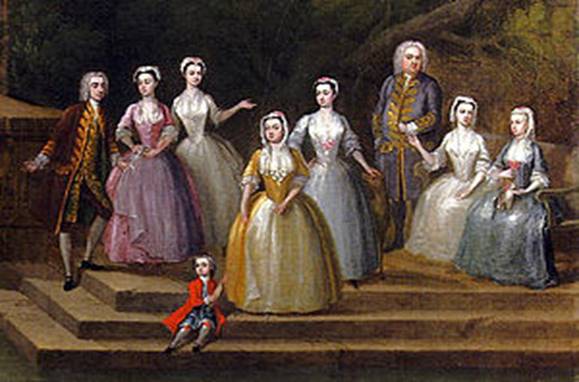
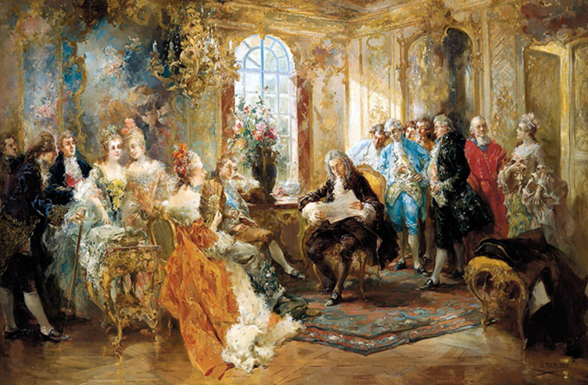

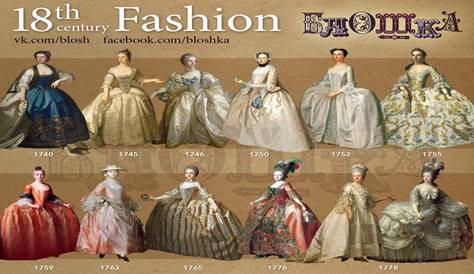
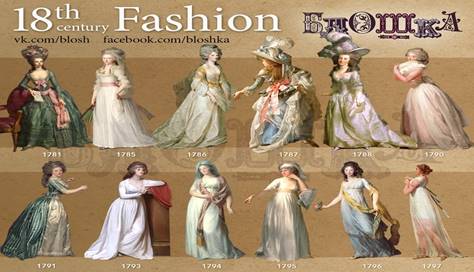
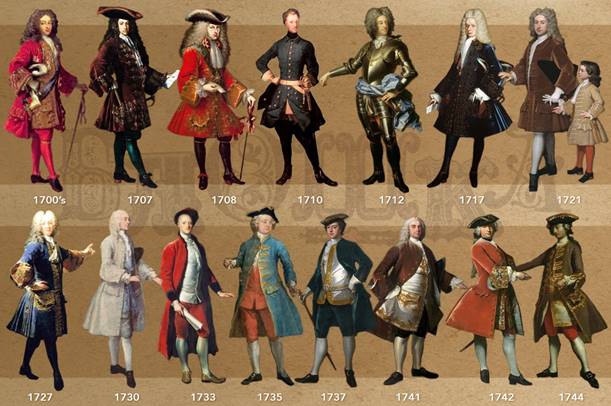
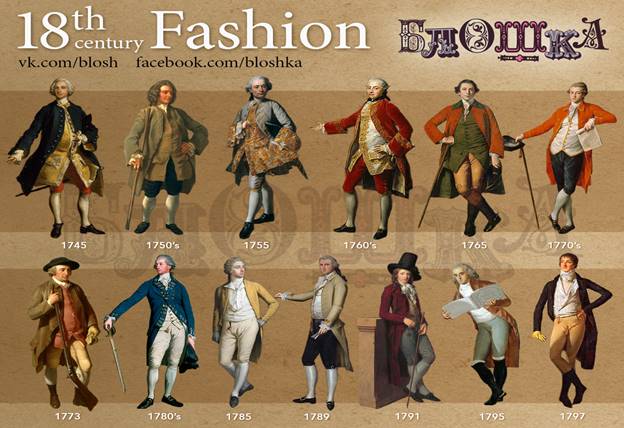
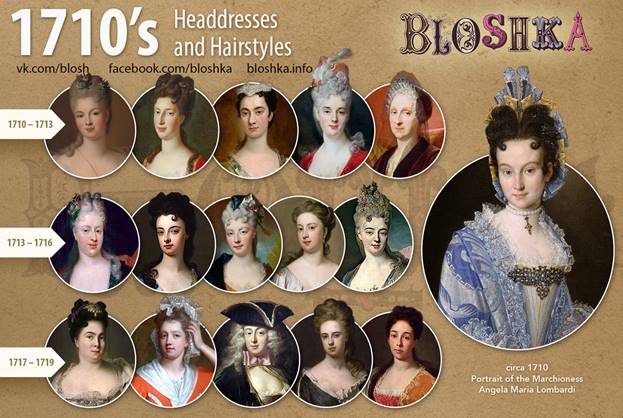

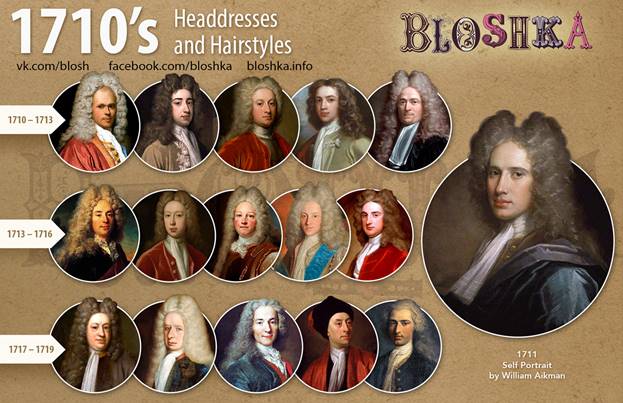

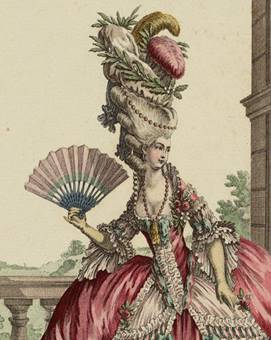
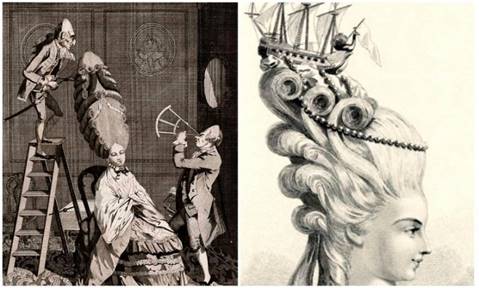


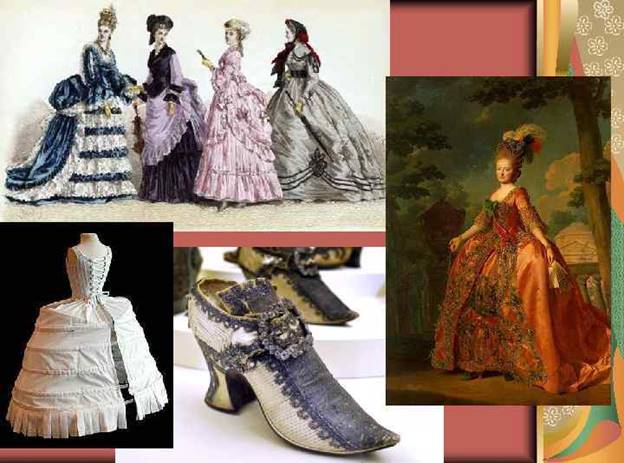
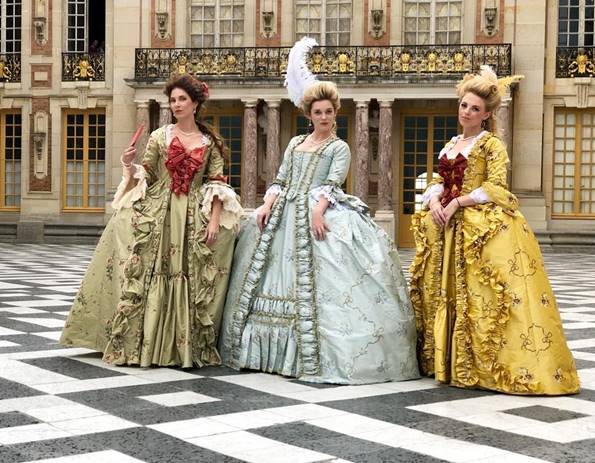
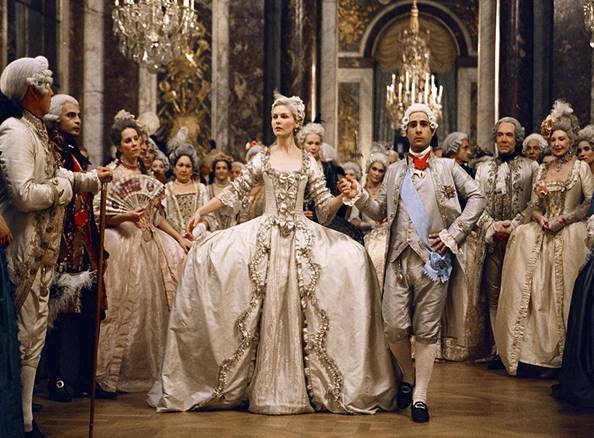
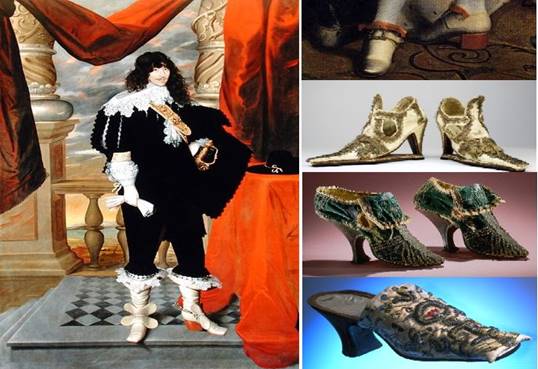
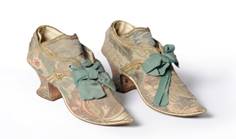
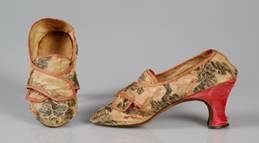
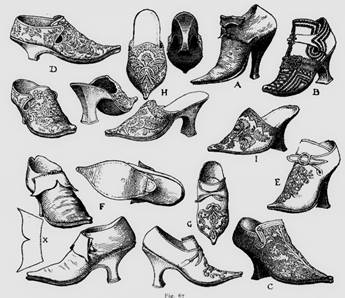
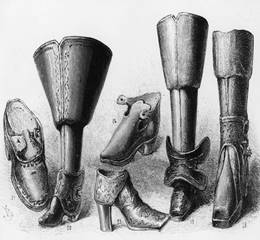

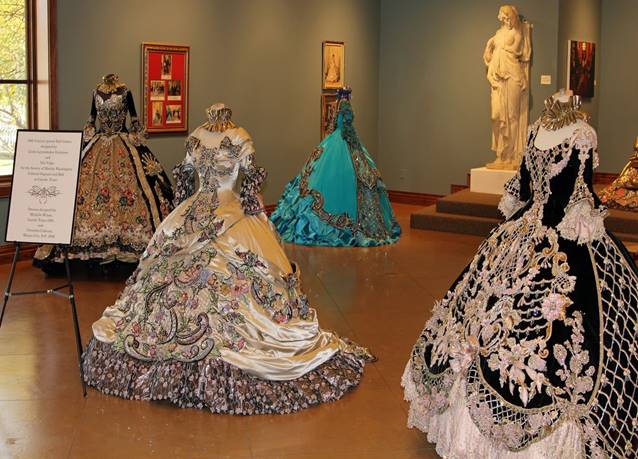
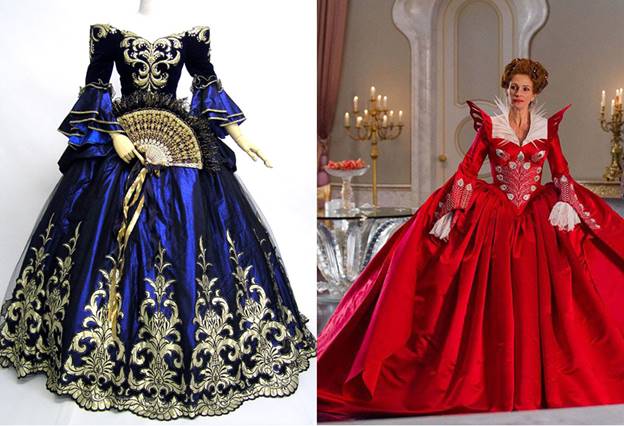
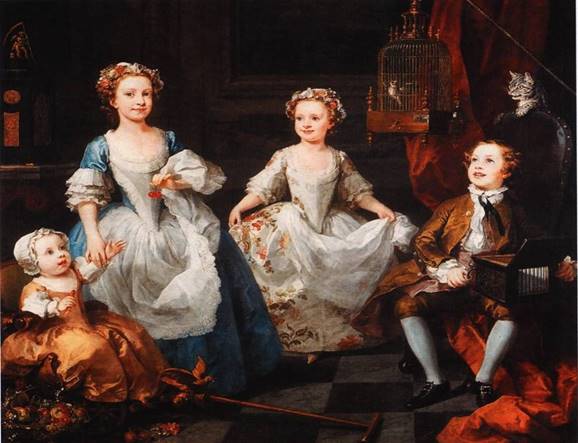
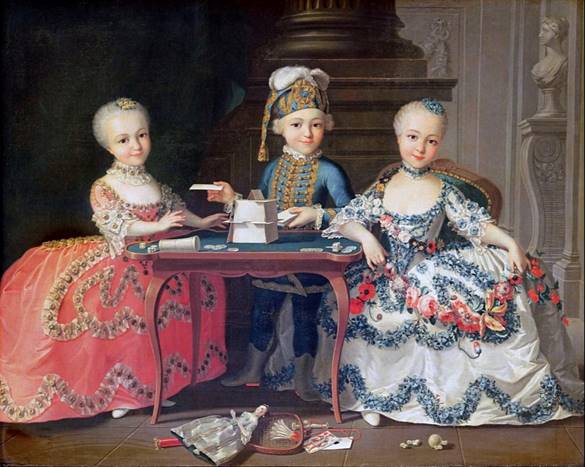
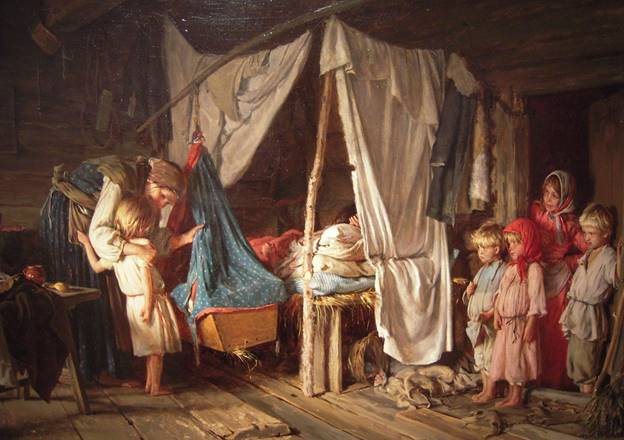
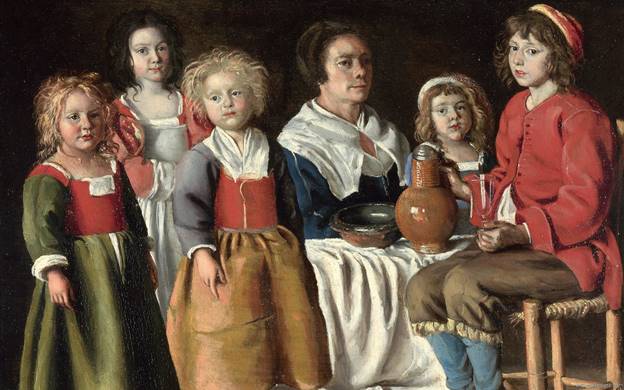


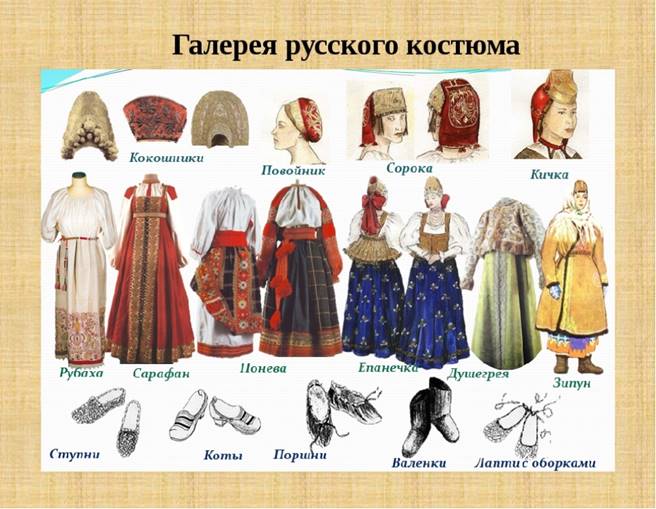
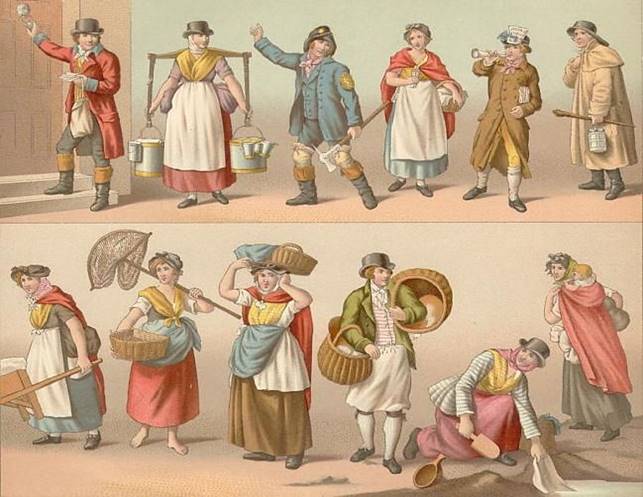
Скачано с www.znanio.ru
Материалы на данной страницы взяты из открытых источников либо размещены пользователем в соответствии с договором-офертой сайта. Вы можете сообщить о нарушении.